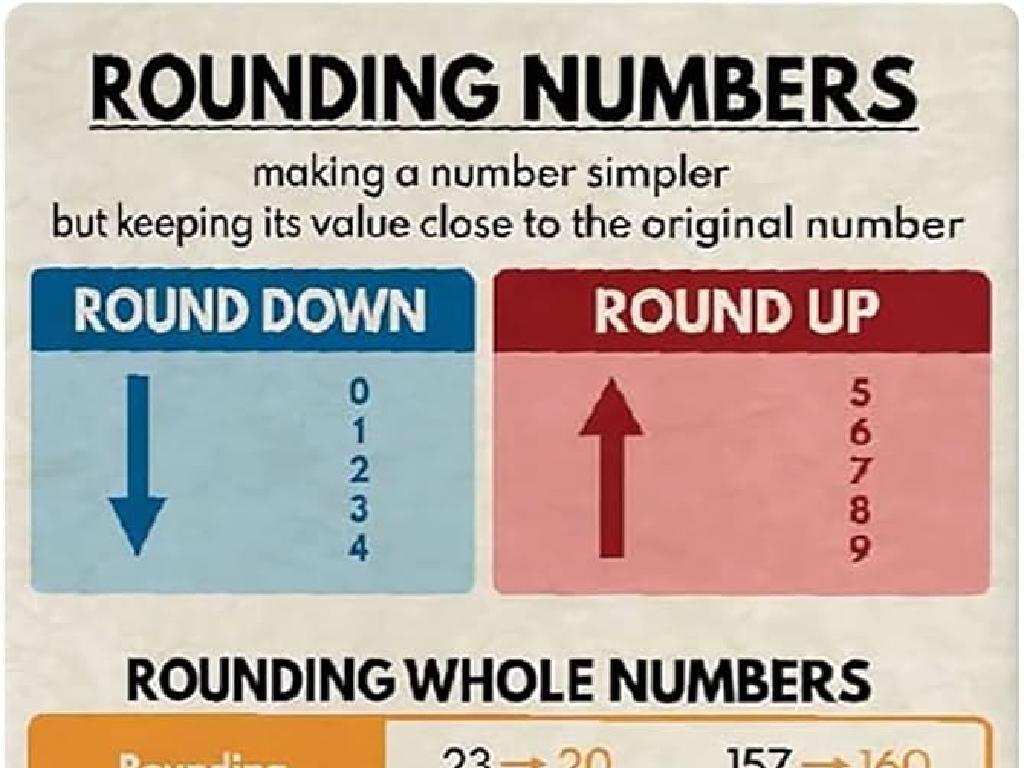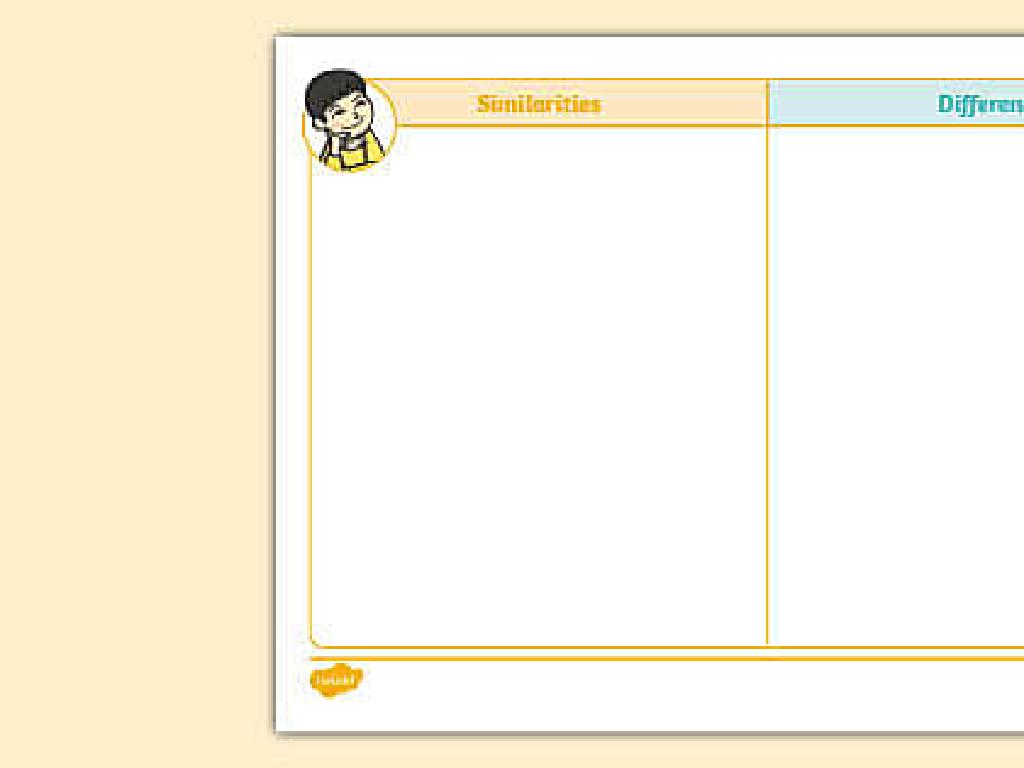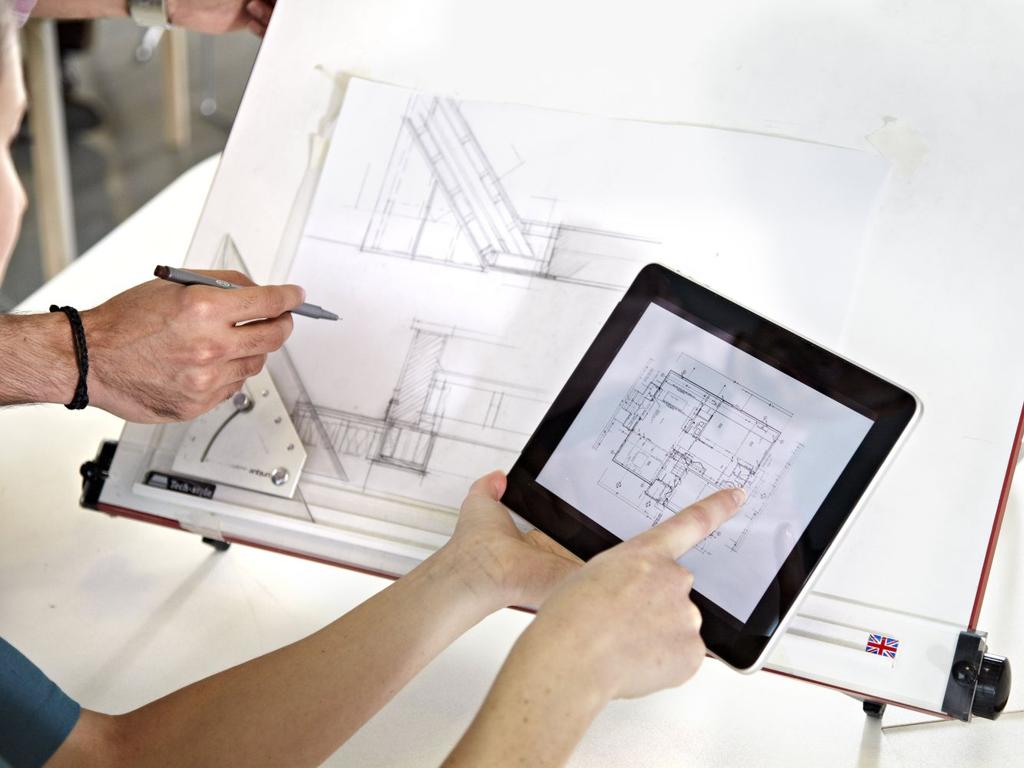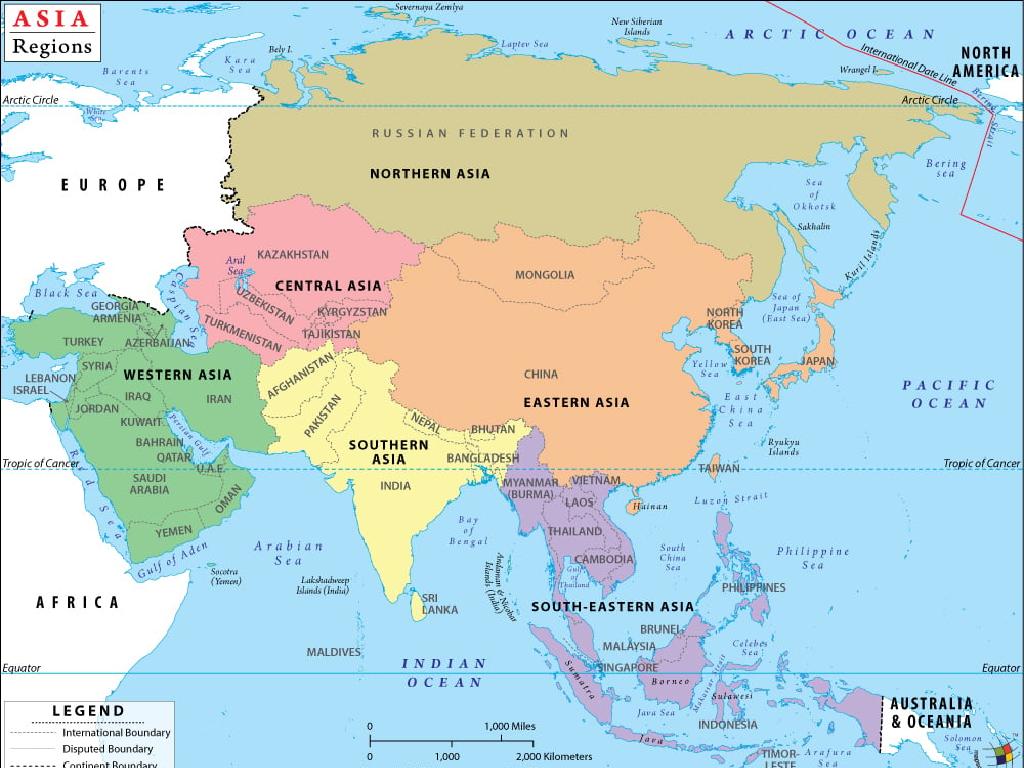Identify Living And Nonliving Things
Subject: Science
Grade: Kindergarten
Topic: Classification
Please LOG IN to download the presentation. Access is available to registered users only.
View More Content
Living vs. Nonliving Things
– What are living things?
– Living things eat, grow, breathe, and have babies.
– What are nonliving things?
– Nonliving things do not eat, grow, breathe, or have babies.
– Characteristics of life
– Living things move, need food, and grow over time.
– Exploring as science detectives
|
This slide introduces the concept of living and nonliving things to Kindergarten students. Begin by explaining that living things are all around us, including plants, animals, and humans. They have specific characteristics such as eating, growing, breathing, and reproducing. In contrast, nonliving things do not have these characteristics. They include rocks, water, and man-made objects like cars and toys. Encourage the children to observe their surroundings and classify objects as living or nonliving. Use simple language and real-life examples that they can relate to, such as pets for living things or their favorite toy for nonliving things. The goal is to spark curiosity and encourage exploration of the natural world.
Exploring Living Things
– Living things are everywhere
– Animals and plants are alive
– Living things grow and eat
– Like how we eat food and puppies grow bigger
– They breathe and reproduce
– People breathe air and animals have babies
|
This slide introduces the concept of living things to Kindergarten students. Emphasize that living things include both animals and plants, and they can be found everywhere in our environment. Explain that living things have specific characteristics such as eating for energy, growing over time, breathing for oxygen, and reproducing to create babies. Use relatable examples like how children eat and grow, or how pets like puppies grow and how their parents had them. Encourage the students to think of examples of living things they have seen or interacted with. The goal is to help them differentiate between living and nonliving things in a simple and understandable way.
Exploring Nonliving Things
– Nonliving things don’t eat
– Examples: Rocks, water, toys
– Rocks don’t need food, water doesn’t grow, toys don’t breathe
– Nonliving things don’t grow
– Nonliving things don’t breathe
|
This slide introduces the concept of nonliving things to Kindergarten students. Emphasize that nonliving things do not have life processes such as eating, growing, or breathing. Use tangible examples that children are familiar with, such as rocks, water, and toys, to illustrate the concept. Explain that although nonliving things do not have life, they are still important and can be used by living things, for example, water for drinking and rocks for building. Encourage the students to think of other nonliving things and discuss how they might be used by living things. This will help them understand the relationship between living and nonliving things in their environment.
Let’s Compare: Living vs. Nonliving Things
– Living things need food and water
– Nonliving things don’t need food or water
– What else is different between them?
– Living things can grow, move, and reproduce
– Let’s think of more differences!
– Nonliving things do not grow, move on their own, or have babies
|
This slide is designed to help Kindergarten students understand the basic differences between living and nonliving things. Start by explaining that all living things need food and water to survive, which is something nonliving things do not require. Encourage the students to think about other differences they might know or observe in their daily lives. For example, living things can grow, move, and have babies, while nonliving things do not. Use simple language and real-life examples that are relatable to the students, such as comparing a pet dog (living) to a toy car (nonliving). This will help them grasp the concept more effectively. During the class, facilitate a discussion that allows the children to express their thoughts and ideas on the topic.
Exploring Living and Nonliving Things
– Classroom exploration walk
– Team up with your buddy
– Make a list of findings
– List items like plants or toys
– Share your discoveries
|
This group activity is designed to help Kindergarten students apply their understanding of living and nonliving things through exploration. Have the children walk around the classroom with a buddy to observe and identify items, categorizing them as living or nonliving. Provide guidance on what defines living things (e.g., they eat, breathe, grow) and nonliving things (e.g., they do not eat or grow). After the exploration, facilitate a discussion where each pair shares their list with the class. This will help reinforce their learning and allow them to engage with the concept in a tangible way. Possible variations of the activity could include drawing the items instead of listing them, or categorizing pictures of items on a worksheet.
Class Activity: Living or Nonliving Sorting Game
– Play a sorting game with pictures
– Decide: Living or Nonliving?
– Is it a plant, animal, or neither?
– Place pictures in correct groups
– Use the sorting mat to organize
– Have fun learning classification!
|
This interactive activity is designed to help Kindergarten students understand the concept of classification by sorting pictures into living or nonliving categories. Provide a variety of pictures that include plants, animals, and inanimate objects. Explain that living things need air, water, and food, and they grow and change. Nonliving things do not have these characteristics. The sorting mat should have two clearly labeled areas for ‘Living’ and ‘Nonliving.’ As students decide where to place each picture, encourage them to explain their reasoning. This will help reinforce their understanding of the differences between living and nonliving things. Possible variations of the activity could include sorting toy models, drawing items, or using items from nature.
Review: Living vs. Nonliving Things
– Living things have life
– They eat, grow, breathe, have babies
– Nonliving things do not
– They don’t eat, grow, breathe, or have babies
– Be a science detective
– Discover the world!
– Use your senses to explore
|
This slide is a recap of our previous lesson on the differences between living and nonliving things. Emphasize the characteristics of living things, such as eating, growing, breathing, and reproducing. Contrast this with nonliving things, which do not exhibit these characteristics. Encourage the children to think like ‘science detectives’ and explore their surroundings to identify what is living and what is not. Use simple language and examples that are relatable to their everyday experiences, such as pets, plants, rocks, and toys. For the activity, you can have the children bring in objects from home or use items in the classroom to classify them as living or nonliving. This will help reinforce their understanding and make the learning process interactive and fun.
Conclusion and Goodbye
– Excellent work, science detectives!
– Recall living vs. nonliving
– Living things eat, grow, breathe, and have babies.
– Anticipate more science fun
– See you in our next adventure!
|
As we wrap up today’s lesson, praise the students for their hard work and remind them of the key differences between living and nonliving things. Reinforce the concept that living things have specific characteristics such as eating, growing, breathing, and reproducing. Let them know that their science exploration is just beginning and there are many more exciting topics to look forward to. Encourage their curiosity and excitement for the next class, where they will continue to learn and discover more about the world around them.





